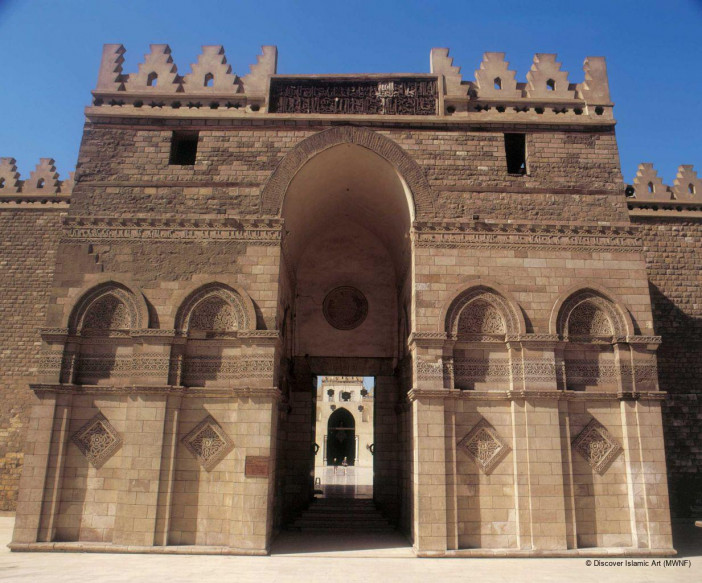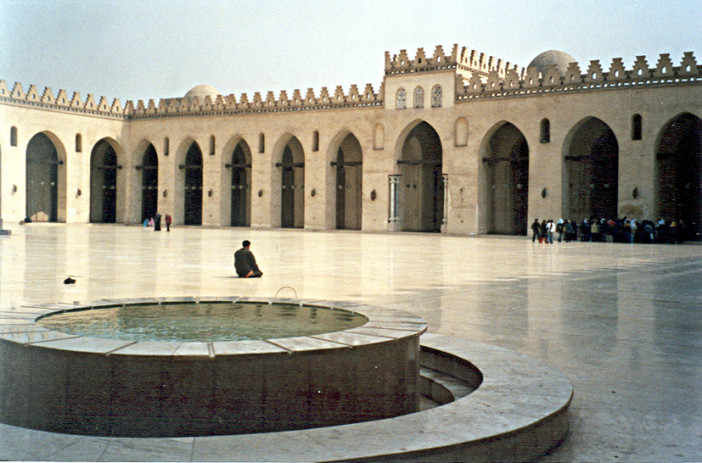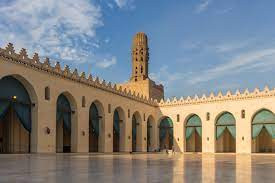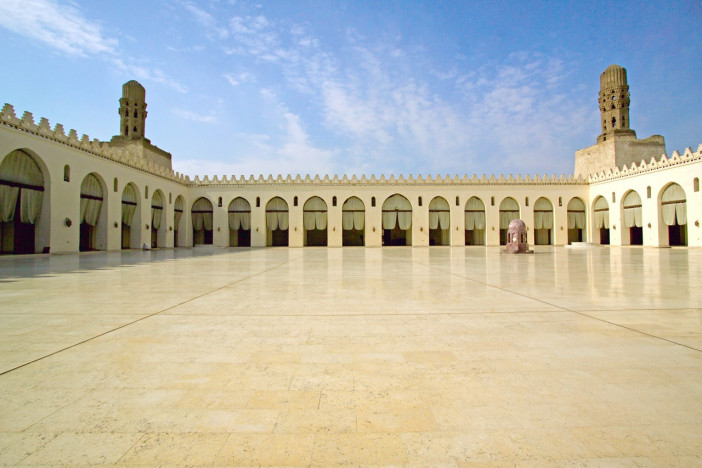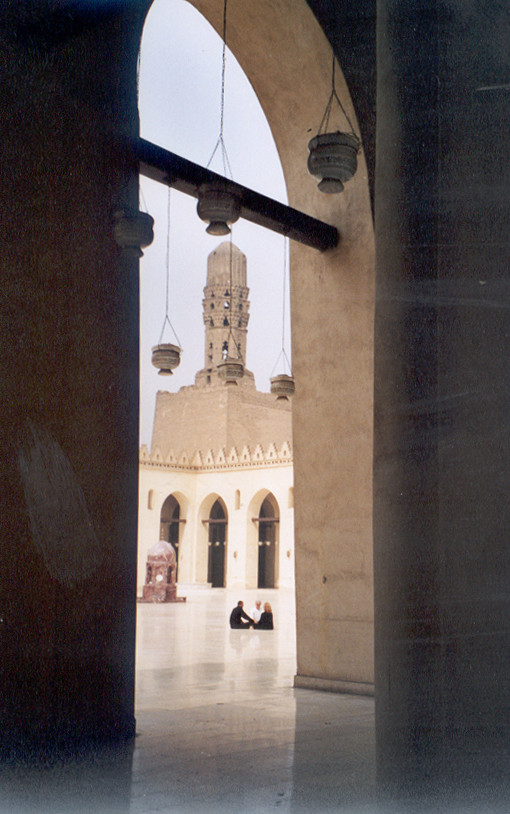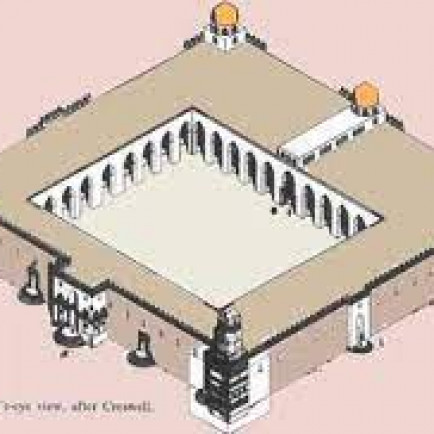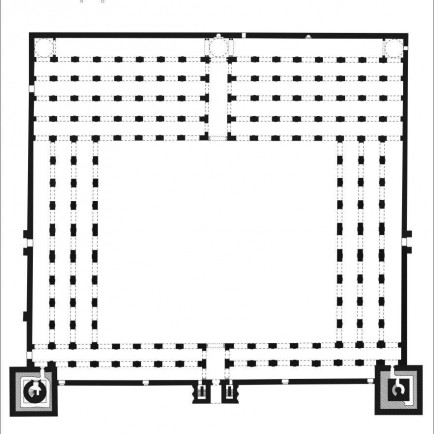The Mosque of al-Hakim
History
The mosque of al-Hakim bi-Amr Allah is the fourth oldest mosque in Egypt and the second biggest after the mosque of Ibn Tulun. The construction of the mosque was begun by al‑Hakim’s father, the Fatimid Caliph al‑‘Aziz bi‑Allah in 379 AH/989 AD, but he died before its completion, leaving his son to finish it in 403 AH/1013 AD. The mosque lies at the end of al-Mu'izz Street in al-Jamaliya, between Bab al-Futuh and Bab al-Nasr.
Urban and Architectural
The main entrance is on the west side of the mosque, and is monumental in scale and design. It is one of the oldest architectural examples of projection of stone porches, and was influenced by the large mosque of Mahdiya in Tunis. The mosque has previously served as a Shiite centre in Egypt and is comparable to its later role in Sunni Islam.
Description
The mosque has a long and intriguing history, including its role as a barracks in the French countryside, when its minarets were used as lookouts.
References
https://egymonuments.gov.eg/monuments/mosque-of-al-hakim-bi-amr-allah/
https://islamicart.museumwnf.org/database_item.php?id=monument;isl;eg;mon01;4;fr
Details
Location
El-Gamaleya, El Gamaliya, Cairo Governorate, Égypte
Worshippers
5000
Owners
Al-Hakim bi-Amr Allah
Year of Build
990
Area
15000
Drawings
Map
History
The mosque of al-Hakim bi-Amr Allah is the fourth oldest mosque in Egypt and the second biggest after the mosque of Ibn Tulun. The construction of the mosque was begun by al‑Hakim’s father, the Fatimid Caliph al‑‘Aziz bi‑Allah in 379 AH/989 AD, but he died before its completion, leaving his son to finish it in 403 AH/1013 AD. The mosque lies at the end of al-Mu'izz Street in al-Jamaliya, between Bab al-Futuh and Bab al-Nasr.
Urban and Architectural
The main entrance is on the west side of the mosque, and is monumental in scale and design. It is one of the oldest architectural examples of projection of stone porches, and was influenced by the large mosque of Mahdiya in Tunis. The mosque has previously served as a Shiite centre in Egypt and is comparable to its later role in Sunni Islam.
Description
The mosque has a long and intriguing history, including its role as a barracks in the French countryside, when its minarets were used as lookouts.


